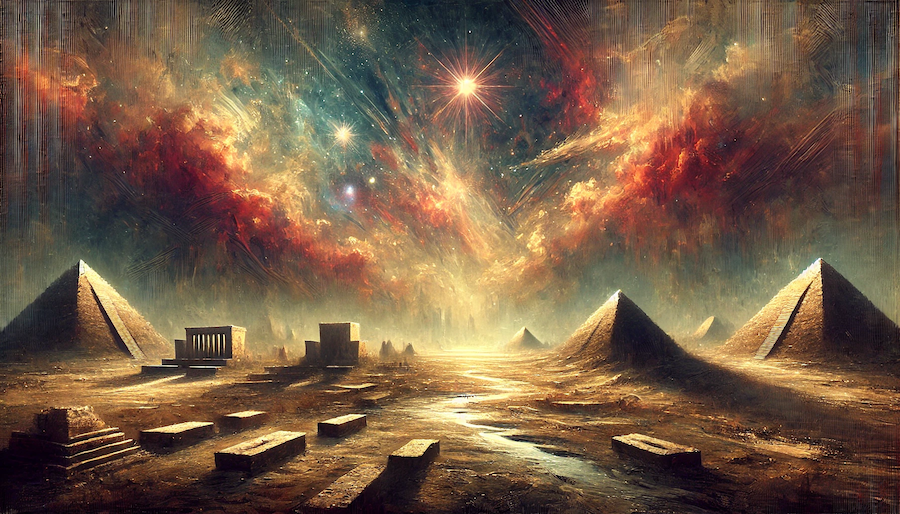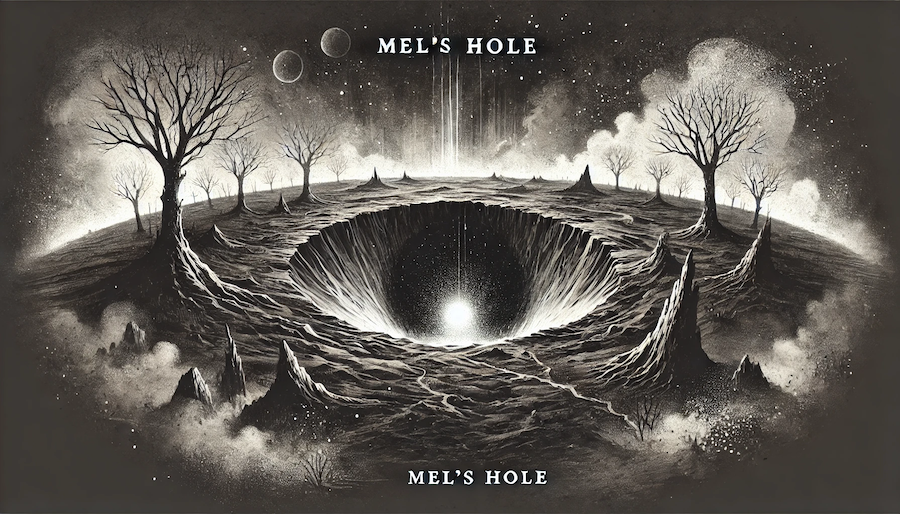The Anunnaki: Who They Are, Where They Come From, and Their Enduring Mystery

The Anunnaki: Who They Are, Where They Come From, and Their Enduring Mystery
Few ancient mythologies inspire as much fascination and speculation as the story of the Anunnaki. Hailing from the lore of ancient Mesopotamia, this group of deities has become the centerpiece of countless conspiracy theories, ranging from alien visitations to the genetic engineering of humanity. But who exactly are the Anunnaki, and why do they continue to capture the imagination of scholars, enthusiasts, and truth-seekers alike?
In this article, we’ll delve into the origins of the Anunnaki, their role in ancient mythology, and the modern theories that have transformed them into a cornerstone of alternative history.
The Origins of the Anunnaki
The term “Anunnaki” originates from the ancient Sumerian language, where it translates roughly to “those who came from the heavens” or “princely offspring.” The Anunnaki were a group of deities worshiped in the ancient civilizations of Sumer, Akkad, Assyria, and Babylon, which thrived in the fertile crescent of Mesopotamia (modern-day Iraq) around 3100 BCE.
In Sumerian mythology, the Anunnaki were believed to be the children of Anu, the god of the heavens, and Ki, the goddess of the Earth. Together, Anu and Ki formed a divine council, with their offspring serving various roles in the maintenance of cosmic order and human affairs. The Anunnaki were considered intermediaries between the gods and humanity, tasked with overseeing the natural world and enforcing divine will.
The Role of the Anunnaki in Sumerian Mythology
In Mesopotamian texts, the Anunnaki played diverse roles, often depicted as both benevolent and fearsome. They were associated with the administration of justice, the creation of humanity, and the establishment of kingship. Some of their most notable mentions include:
-
Creators of Humanity: One of the most enduring myths involving the Anunnaki is the creation of humans. According to Sumerian legend, the Anunnaki fashioned mankind from clay to serve the gods by performing labor and maintaining the Earth. This myth is detailed in the Enuma Elish and other ancient texts, where humans are portrayed as a servant species created to relieve the gods of their burdens.
-
Judges of the Dead: In Babylonian tradition, the Anunnaki were often linked to the underworld. They were said to preside over the judgment of souls, determining their fate in the afterlife. This duality—being both creators and judges—highlights the Anunnaki’s complex and multifaceted nature.
-
Patrons of Kingship: The Anunnaki were also associated with the establishment and legitimacy of kingship. Ancient Mesopotamian rulers often claimed divine descent from the Anunnaki, using this connection to justify their authority.
Theories of Extraterrestrial Origins
While the Anunnaki’s roots lie firmly in ancient mythology, modern interpretations have propelled them into the realm of conspiracy theories and alternative history. The most famous proponent of the Anunnaki-as-aliens theory is Zecharia Sitchin, a controversial author who published a series of books beginning with The 12th Planet in 1976.
Sitchin’s claims include:
-
Visitors from Nibiru: According to Sitchin, the Anunnaki were not mere deities but an advanced extraterrestrial race from a distant planet called Nibiru. He theorized that Nibiru has an elongated orbit around the Sun, bringing it close to Earth approximately every 3,600 years.
-
Creators of Humanity via Genetic Engineering: Sitchin proposed that the Anunnaki came to Earth in search of gold, a precious resource they needed to stabilize their planet’s atmosphere. To assist in mining operations, the Anunnaki allegedly created humans by genetically modifying early hominids, blending their own DNA with that of primitive Earth species.
-
Architects of Ancient Civilizations: Sitchin also suggested that the Anunnaki were responsible for the rapid advancement of human civilization, imparting knowledge of agriculture, astronomy, and architecture to their human creations.
While Sitchin’s work has been criticized by mainstream scholars for its lack of linguistic and archaeological accuracy, it has nevertheless gained a devoted following, fueling countless theories about alien intervention in human history.
The Anunnaki in Ancient Texts
The primary sources of information about the Anunnaki come from ancient Mesopotamian texts, including:
-
The Sumerian King List: This ancient document lists the names of Sumerian kings and their reigns, interspersed with references to the Anunnaki as divine overseers who granted kingship to humanity.
-
The Epic of Gilgamesh: One of the oldest known works of literature, the Epic of Gilgamesh mentions the Anunnaki in the context of divine judgment and their role in the underworld.
-
The Enuma Elish: This Babylonian creation myth describes the Anunnaki as powerful deities who helped shape the cosmos and establish order after the defeat of the primordial chaos goddess Tiamat.
These texts provide a foundation for understanding the Anunnaki’s cultural significance, though their content is often open to interpretation.
Theories Beyond Sitchin
While Sitchin’s theories dominate the modern narrative of the Anunnaki, other interpretations have emerged:
-
Astral Deities: Some scholars suggest that the Anunnaki were originally conceptualized as celestial bodies or forces of nature, with their names and roles reflecting the movements of planets and stars.
-
Symbolic Archetypes: Psychological interpretations view the Anunnaki as symbolic archetypes representing human desires, fears, and the struggle to understand existence.
-
Hidden Histories: Fringe theories propose that evidence of the Anunnaki’s existence has been deliberately suppressed by mainstream institutions to maintain a specific narrative about human origins.
The Enduring Appeal of the Anunnaki
The Anunnaki’s story resonates across cultures and centuries for several reasons:
-
Mystery and Ambiguity: The lack of definitive answers about the Anunnaki leaves ample room for speculation, making them a perfect subject for imaginative theories.
-
Human Origins: The idea that humanity’s development was influenced by an advanced external force taps into our collective curiosity about where we come from and why.
-
Cosmic Significance: By connecting the Anunnaki to extraterrestrial life, theorists expand the scope of their story to a cosmic scale, appealing to those fascinated by the possibility of life beyond Earth.
-
Ancient Wisdom: The Anunnaki are often portrayed as bearers of ancient knowledge, a theme that aligns with humanity’s enduring reverence for lost civilizations and forgotten wisdom.
Criticism and Skepticism
While the Anunnaki inspire wonder and intrigue, they are not without their detractors. Scholars and archaeologists argue that many modern interpretations distort the original Mesopotamian myths:
-
Linguistic Errors: Critics point out that Sitchin’s translations of Sumerian texts often deviate significantly from accepted academic standards.
-
Lack of Evidence: There is no archaeological evidence to support claims of extraterrestrial involvement in human history or the existence of Nibiru.
-
Misrepresentation of Myths: Mainstream historians emphasize that the Anunnaki were gods within a symbolic framework, not literal beings or aliens.
Conclusion
The Anunnaki are a testament to humanity’s enduring fascination with the unknown. Whether viewed as ancient deities, extraterrestrial visitors, or symbolic figures, they challenge us to explore the boundaries of our understanding and consider the vast possibilities of our origins.
While much of the modern narrative surrounding the Anunnaki is speculative, their story serves as a bridge between ancient mythology and contemporary curiosity. In the end, the Anunnaki remain a mystery, a tantalizing puzzle that continues to inspire both awe and debate. As we dig deeper into the myths and theories, one thing becomes clear: the story of the Anunnaki is far from over.



